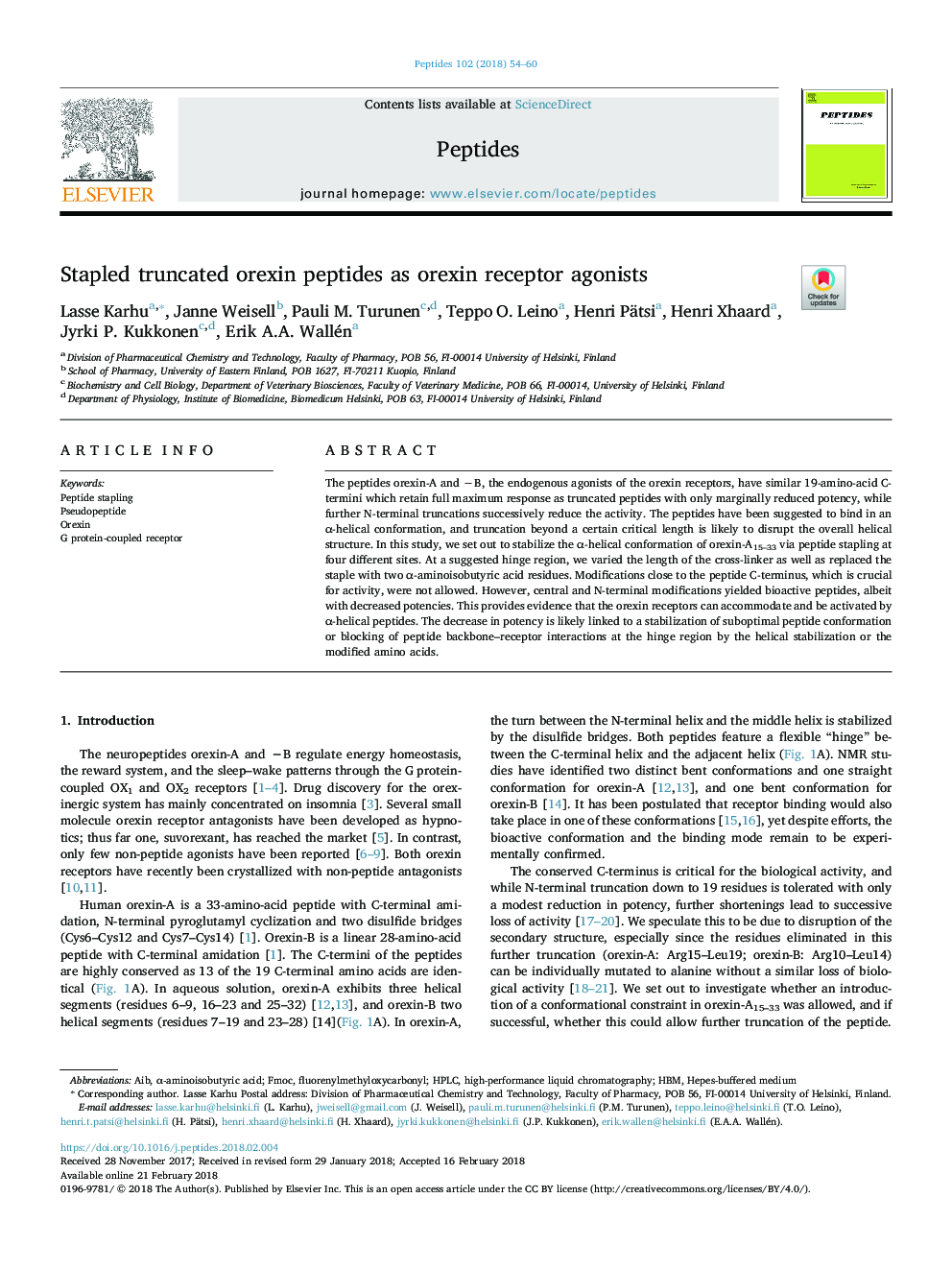| Article ID | Journal | Published Year | Pages | File Type |
|---|---|---|---|---|
| 8347350 | Peptides | 2018 | 7 Pages |
Abstract
The peptides orexin-A and âB, the endogenous agonists of the orexin receptors, have similar 19âamino-acid C-termini which retain full maximum response as truncated peptides with only marginally reduced potency, while further N-terminal truncations successively reduce the activity. The peptides have been suggested to bind in an αâhelical conformation, and truncation beyond a certain critical length is likely to disrupt the overall helical structure. In this study, we set out to stabilize the αâhelical conformation of orexinâA15-33 via peptide stapling at four different sites. At a suggested hinge region, we varied the length of the cross-linker as well as replaced the staple with two α-aminoisobutyric acid residues. Modifications close to the peptide Câterminus, which is crucial for activity, were not allowed. However, central and Nâterminal modifications yielded bioactive peptides, albeit with decreased potencies. This provides evidence that the orexin receptors can accommodate and be activated by α-helical peptides. The decrease in potency is likely linked to a stabilization of suboptimal peptide conformation or blocking of peptide backbone-receptor interactions at the hinge region by the helical stabilization or the modified amino acids.
Keywords
Related Topics
Life Sciences
Biochemistry, Genetics and Molecular Biology
Biochemistry
Authors
Lasse Karhu, Janne Weisell, Pauli M. Turunen, Teppo O. Leino, Henri Pätsi, Henri Xhaard, Jyrki P. Kukkonen, Erik A.A. Wallén,
